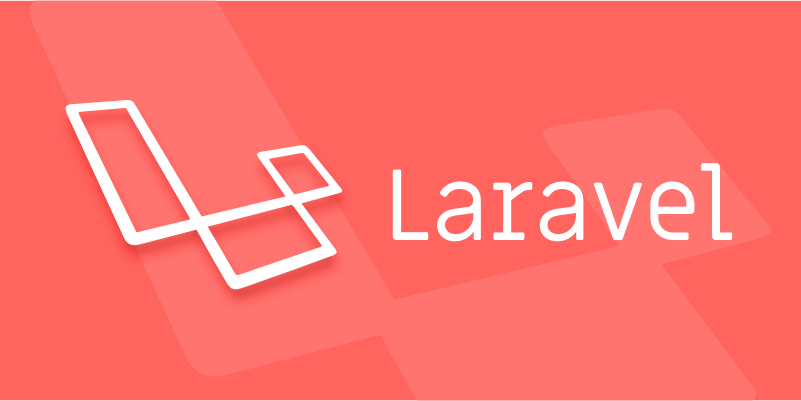The resolve() helper in Laravel is used to fetch a class instance from the service container. It works by resolving dependencies based on registered bindings, allowing you to retrieve services without type-hinting or facades. 1. Use it when type-hinting isn’t available such as in closures or Blade views. 2. Use it for quick access to services without injecting them everywhere. 3. Use it for conditional resolution to avoid unnecessary overhead. However, prefer type-hinting in controllers or classes where dependency injection is supported. resolve() and app() are largely interchangeable, though app() can also return the application instance. Always ensure resolved classes are properly bound to avoid errors, and use resolve() sparingly to maintain clean, testable code.

In Laravel, the resolve() helper is a convenient way to fetch a class instance from the service container. It’s especially useful when you need to resolve dependencies without using type-hinting or facades. You’ll often see it used in places like routes, controllers, or even within Blade templates when needed.

What resolve() actually does
At its core, resolve() is a shortcut for getting an instance of a class out of Laravel’s IoC (Inversion of Control) container. The container handles dependency resolution automatically based on how things are bound or registered.
For example:

$logger = resolve('Psr\Log\LoggerInterface');This line tells Laravel to find whatever class was registered to fulfill the LoggerInterface contract and return an instance of it.
You can use it with any class or interface that's properly bound in the container — including your own services.

When to use resolve()
There are a few situations where resolve() comes in handy:
- In places where type-hinting isn’t available – Like inside closures or Blade views.
- Quick access to a service without injecting it everywhere – Sometimes you just want to grab something quickly without adding it to every constructor or method.
- Testing or conditional logic – You might only need a service under certain conditions, so resolving it conditionally avoids unnecessary overhead.
A common use case might be pulling in a service inside a route closure:
Route::get('/users', function () {
$userService = resolve(\App\Services\UserService::class);
return $userService->getAllUsers();
});Just remember: if you're already in a controller or class where dependency injection works, it's usually cleaner to just type-hint there instead.
How to use resolve() effectively
Here are a few tips to make sure you’re not misusing it:
- ? Use it sparingly — it’s a helper, not a replacement for proper DI.
- ? Prefer type-hinting in constructors or methods when possible.
- ? Don’t overuse it in Blade templates — it can make templates harder to test or maintain.
- ? Make sure what you’re resolving is actually bindable — if the class isn't registered or instantiable, Laravel will throw an error.
Also, keep in mind that resolve() doesn’t always mean "new instance" — depending on how the binding is set up, it might return a shared instance (singleton) instead.
Alternative: Using app() as a shortcut
You might also see people using app() instead of resolve(). In most cases, they do the same thing. The difference is subtle:
resolve()tries to resolve exactly what you give it.app()can also be used to get the application instance itself, which gives it more flexibility but also makes it slightly broader in scope.
So this:
resolve(\App\Services\UserService::class);
is basically the same as:
app(\App\Services\UserService::class);
Use whichever feels more natural in your codebase — just be consistent.
Basically, resolve() is a helpful tool when you need to pull something out of the container quickly. Just don’t let it become a crutch — stick to dependency injection where possible, and use resolve() where it makes sense.
The above is the detailed content of How to use the `resolve()` helper in Laravel.. For more information, please follow other related articles on the PHP Chinese website!

Hot AI Tools

Undress AI Tool
Undress images for free

Undresser.AI Undress
AI-powered app for creating realistic nude photos

AI Clothes Remover
Online AI tool for removing clothes from photos.

Clothoff.io
AI clothes remover

Video Face Swap
Swap faces in any video effortlessly with our completely free AI face swap tool!

Hot Article

Hot Tools

Notepad++7.3.1
Easy-to-use and free code editor

SublimeText3 Chinese version
Chinese version, very easy to use

Zend Studio 13.0.1
Powerful PHP integrated development environment

Dreamweaver CS6
Visual web development tools

SublimeText3 Mac version
God-level code editing software (SublimeText3)
 Creating Custom Validation Rules in a Laravel Project
Jul 04, 2025 am 01:03 AM
Creating Custom Validation Rules in a Laravel Project
Jul 04, 2025 am 01:03 AM
There are three ways to add custom validation rules in Laravel: using closures, Rule classes, and form requests. 1. Use closures to be suitable for lightweight verification, such as preventing the user name "admin"; 2. Create Rule classes (such as ValidUsernameRule) to make complex logic clearer and maintainable; 3. Integrate multiple rules in form requests and centrally manage verification logic. At the same time, you can set prompts through custom messages methods or incoming error message arrays to improve flexibility and maintainability.
 Working with pivot tables in Laravel Many-to-Many relationships
Jul 07, 2025 am 01:06 AM
Working with pivot tables in Laravel Many-to-Many relationships
Jul 07, 2025 am 01:06 AM
ToworkeffectivelywithpivottablesinLaravel,firstaccesspivotdatausingwithPivot()orwithTimestamps(),thenupdateentrieswithupdateExistingPivot(),managerelationshipsviadetach()andsync(),andusecustompivotmodelswhenneeded.1.UsewithPivot()toincludespecificcol
 Sending different types of notifications with Laravel
Jul 06, 2025 am 12:52 AM
Sending different types of notifications with Laravel
Jul 06, 2025 am 12:52 AM
Laravelprovidesacleanandflexiblewaytosendnotificationsviamultiplechannelslikeemail,SMS,in-appalerts,andpushnotifications.Youdefinenotificationchannelsinthevia()methodofanotificationclass,andimplementspecificmethodsliketoMail(),toDatabase(),ortoVonage
 Understanding Dependency Injection in Laravel?
Jul 05, 2025 am 02:01 AM
Understanding Dependency Injection in Laravel?
Jul 05, 2025 am 02:01 AM
Dependency injection automatically handles class dependencies through service containers in Laravel without manual new objects. Its core is constructor injection and method injection, such as automatically passing in the Request instance in the controller. Laravel parses dependencies through type prompts and recursively creates the required objects. The binding interface and implementation can be used by the service provider to use the bind method, or singleton to bind a singleton. When using it, you need to ensure type prompts, avoid constructor complications, use context bindings with caution, and understand automatic parsing rules. Mastering these can improve code flexibility and maintenance.
 Strategies for optimizing Laravel application performance
Jul 09, 2025 am 03:00 AM
Strategies for optimizing Laravel application performance
Jul 09, 2025 am 03:00 AM
Laravel performance optimization can improve application efficiency through four core directions. 1. Use the cache mechanism to reduce duplicate queries, store infrequently changing data through Cache::remember() and other methods to reduce database access frequency; 2. Optimize database from the model to query statements, avoid N 1 queries, specifying field queries, adding indexes, paging processing and reading and writing separation, and reduce bottlenecks; 3. Use time-consuming operations such as email sending and file exporting to queue asynchronous processing, use Supervisor to manage workers and set up retry mechanisms; 4. Use middleware and service providers reasonably to avoid complex logic and unnecessary initialization code, and delay loading of services to improve startup efficiency.
 Managing database state for testing in Laravel
Jul 13, 2025 am 03:08 AM
Managing database state for testing in Laravel
Jul 13, 2025 am 03:08 AM
Methods to manage database state in Laravel tests include using RefreshDatabase, selective seeding of data, careful use of transactions, and manual cleaning if necessary. 1. Use RefreshDatabasetrait to automatically migrate the database structure to ensure that each test is based on a clean database; 2. Use specific seeds to fill the necessary data and generate dynamic data in combination with the model factory; 3. Use DatabaseTransactionstrait to roll back the test changes, but pay attention to its limitations; 4. Manually truncate the table or reseed the database when it cannot be automatically cleaned. These methods are flexibly selected according to the type of test and environment to ensure the reliability and efficiency of the test.
 Choosing between Laravel Sanctum and Passport for API authentication
Jul 14, 2025 am 02:35 AM
Choosing between Laravel Sanctum and Passport for API authentication
Jul 14, 2025 am 02:35 AM
LaravelSanctum is suitable for simple, lightweight API certifications such as SPA or mobile applications, while Passport is suitable for scenarios where full OAuth2 functionality is required. 1. Sanctum provides token-based authentication, suitable for first-party clients; 2. Passport supports complex processes such as authorization codes and client credentials, suitable for third-party developers to access; 3. Sanctum installation and configuration are simpler and maintenance costs are low; 4. Passport functions are comprehensive but configuration is complex, suitable for platforms that require fine permission control. When selecting, you should determine whether the OAuth2 feature is required based on the project requirements.
 Implementing Database Transactions in Laravel?
Jul 08, 2025 am 01:02 AM
Implementing Database Transactions in Laravel?
Jul 08, 2025 am 01:02 AM
Laravel simplifies database transaction processing with built-in support. 1. Use the DB::transaction() method to automatically commit or rollback operations to ensure data integrity; 2. Support nested transactions and implement them through savepoints, but it is usually recommended to use a single transaction wrapper to avoid complexity; 3. Provide manual control methods such as beginTransaction(), commit() and rollBack(), suitable for scenarios that require more flexible processing; 4. Best practices include keeping transactions short, only using them when necessary, testing failures, and recording rollback information. Rationally choosing transaction management methods can help improve application reliability and performance.






